Publications
List of Scientific Articles and Books

CCI's clinical research team have published over 200 peer-reviewed journal articles and books about mental disorders and their treatment.
You can use Google Scholar to view our most recent and full list of publications.
Educational Articles

CCI Senior Clinical Psychologist and Professor of Psychology Peter McEvoy has published several informative articles about mental disorders and their treatment on the Conversation, a media outlet that publishes educational articles written by Australian academics.
Professor McEvoy has also collaborated with Mentally Healthy WA to provide tips to the public about how to manage anxiety while in lockdown during the coronavirus pandemic.
Research Updates
In the section below are brief overviews and links to select recent research publications and presentations involving CCI staff.
The contribution of shame to eating disorder treatment outcomes in a community mental health clinic
Samantha Kenny, David Erceg-Hurn, Kate Tonta, Bronwyn Raykos, Bruce Campbell, and Peter McEvoy
International Journal of Eating Disorders
https://doi.org/10.1002/eat.24248
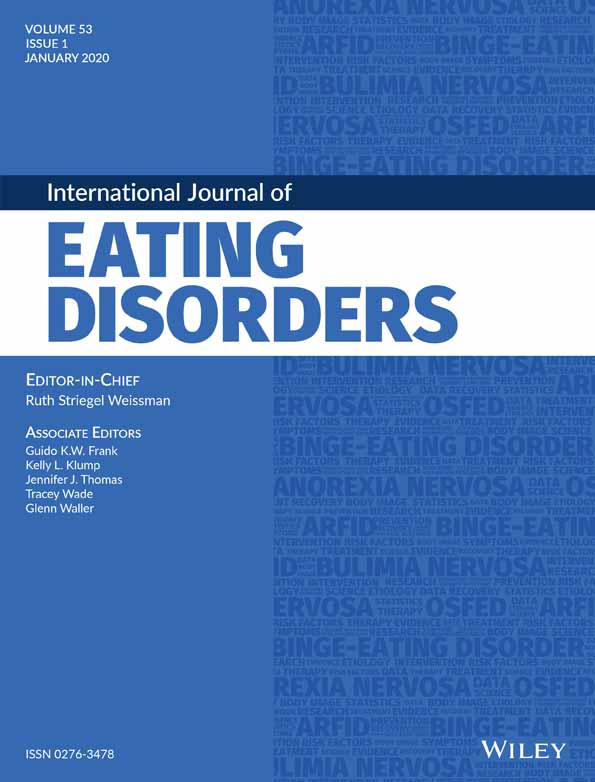
Why did we do this study?
Shame is a powerful self-conscious emotion that is often experienced by people with eating disorders. We sought to understand whether how much shame someone is feeling before they start treatment is related to the gains they experience in treatment for eating disorders.
How did we do this?
273 individuals undertaking eating disorder treatment at CCI completed questionnaires measuring their feelings of shame and eating disorder symptoms.
We examined the extent to which symptoms and shame improved during treatment, and whether levels of shame at the start of treatment predicted the amount of change in eating disorder symptoms.
What did we find?
There were three key findings. First, shame reduced substantially even though it was not the main focus of treatment. Second, people who felt more shame were just as likely to complete treatment as people with less shame. Third, people with lower shame before treatment tended to have a slightly larger improvement in their eating disorder symptoms during treatment.
How will we use it (or how can it be used)?
These findings tell us that having higher levels of shame does not mean that someone will not benefit from eating disorder treatment! The positive effects for people with high levels of shame were still very large. However, we will consider how we can specifically target shame to make our treatments even more effective for clients who have higher levels of shame.
Links
An investigation of cognitive and affective changes during group imagery rescripting for social anxiety disorder
Aoibheann McCarthy, Samantha Bank, Bruce Campbell, Mark Summers, Melissa Burgess and Peter McEvoy
Behavior Therapy
https://doi.org/10.1016/j.beth.2022.04.012
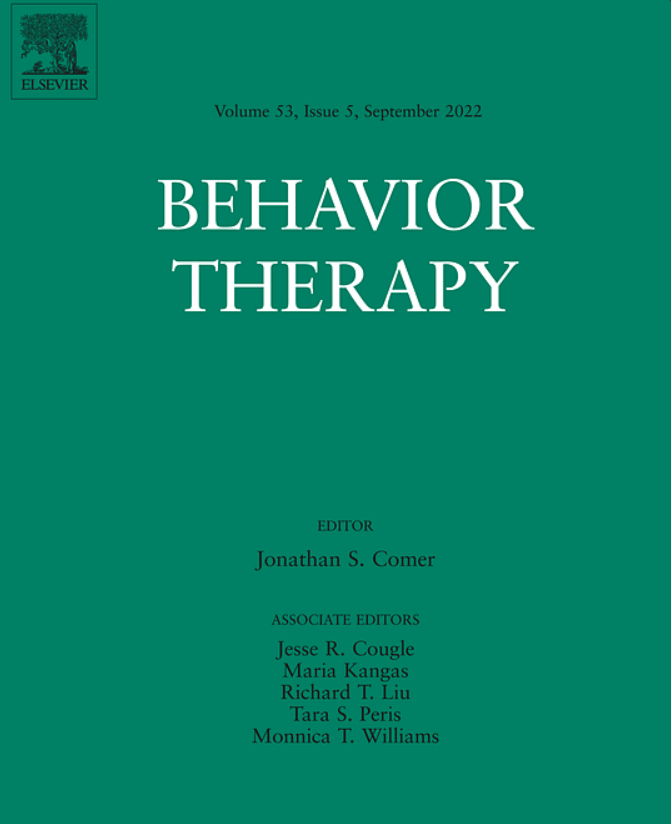
Why did we do this study?
People with significant social anxiety often report early life experiences that may have contributed to their current problems, such as bullying, humiliation, or excessive criticism. Others find themselves being very self-critical and expecting hostility from other people, even if they cannot remember specific past events that contributed to these patterns. One of the strategies we use in our social anxiety treatment to help people to see their past experiences and themselves in more positive and helpful ways, is past imagery rescripting. Imagery rescripting guides people through their memories of past events in new ways – with a more compassionate and empathic perspective. We wanted to know how well this strategy works for people attending our social anxiety groups.
How did we do this?
We asked people attending our groups about their experiences during the imagery rescripting session. We asked them about the beliefs they hold about themselves, others, the world, and their memories of past events before and after imagery rescripting. We also asked them about the new beliefs they formed during imagery rescripting. Finally, we asked about their emotional changes during imagery rescripting.
What did we find?
Imagery rescripting within groups was associated with large reductions in negative beliefs about the self, others, the world, and the past memories. Positive, balanced, helpful, and more compassionate beliefs about the self and others were formed during imagery rescripting. The emotional changes through the process of imagery rescripting were also large – shifting from very negative emotions associated with past memory to feeling more positive emotions as they saw the memory from a different perspective.
How will we use it (or how can it be used)?
The study suggests that imagery rescripting may be a very effective strategy for modifying beliefs and emotions people with social anxiety are currently experience, by shifting their perspective of past experiences both cognitively and emotionally. This was one of the first studies of imagery rescripting within a group context, so it is reassuring to know it is effective within our group programs. We hope these findings will lead to other services offering imagery rescripting for people experiencing social anxiety.
This study was supported by a project grant from the National Health and Medical Research Council (NHMRC) of Australia.
Links
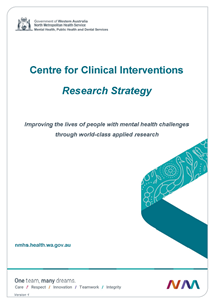
Release of inaugural CCI research strategy
In May 2022, CCI launched its inaugural research strategy. The document emphasizes that research and evaluation are fundamental components of the model of care at CCI, and that as a centre of excellence in clinical psychology we strive to improve the lives of people with mental health challenges through world-class applied research.
The strategy notes that our mission is to support partnerships between researchers, clinicians, and people with lived experience to ensure consumers receive high quality care with outcomes that set new international benchmarks through continual evaluation, quality improvement, and innovative translational research.
The document describes CCI’s research values and guiding principles, such as that we are consumer-focused; that research and practice must be tightly integrated in order to optimise consumer outcomes; and that we while our primary focus is on improving the lives of our clients in Western Australia through our treatment programs, we aim for our research to have a global impact.
The strategy also outlines the centre’s research goals and priorities for the next few years.
Links
Positive outcomes from integrating telehealth into routine clinical practice for eating disorders during COVID-19
Bronwyn Raykos, David Erceg-Hurn, James Hill, Bruce Campbell & Peter McEvoy
International Journal of Eating Disorders
https://doi.org/10.1002/eat.23574

Why did we do this study?
Psychological treatments for eating disorders have traditionally been provided using face-to-face therapy. However the coronavirus pandemic (COVID-19) resulted in eating disorder treatment services in Western Australia and around the world having to rapidly transition to providing treatment via teletherapy. Concerns have been raised that outcomes may be worse when treatment is delivered remotely via teletherapy than in person; and more generally that the pandemic may have resulted in a substantially worsening of symptoms among people with eating disorders. However high-quality research is needed to establish whether such claims are valid.
How did we do this?
We sought to investigate the impact of a forced switch in therapy modality on treatment outcomes. We did this by studying the outcomes of eating disorder patients treated at CCI during the pandemic ("COVID cohort"), and comparing them against patients treated at our clinic before the pandemic ("Pre-COVID cohort").
What did we find?
Treatment outcomes, such as reductions in eating disorder symptoms and impairment, were similar for the COVID and pre-COVID cohorts, suggesting that evidence-based treatment can still be effective when provided by teletherapy during a pandemic. Patients were grateful that they continued to receive care remotely during the pandemic; they perceived the quality of the care they received to be high and found teletherapy an acceptable way to provide eating disorder treatment.
How will we use it (or how can it be used)?
The study suggests that providing evidence-based treatment for eating disorders via telehealth during the COVID-19 pandemic is acceptable to patients and associated with positive treatment outcomes. This finding can help inform how clinicians and treatment services plan the delivery of treatment to eating disorder clients with face-to-face treatment is not possible.
Links
A longitudinal assessment of the bivalent fear of evaluation model with social interaction anxiety in social anxiety disorder
Andrew Johnson, Samantha Bank, Mark Summers, Matthew Hyett, David Erceg‐Hurn, Michael Kyron & Peter McEvoy
Depression & Anxiety
https://doi.org/10.1002/da.23099
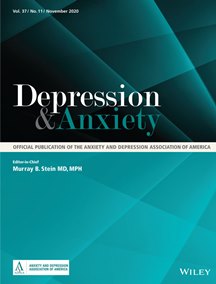
Why did we do this study?
Social Anxiety Disorder is characterised by a severe and persistent fear of social situations. It has long been thought that people who are socially anxious fear being negatively evaluated by others during social interactions (e.g., having a conversation), while being observed (e.g., eating) or when performing (e.g., giving a speech). More recently it has been proposed that socially anxious individuals may also fear being positively evaluated by others. However, it is unclear whether fear of positive evaluation (FPE) is distinct from fear of negative evaluation (FNE), and if so, how strongly each one is related to the severity of social anxiety.
How did we do this?
Individuals in a recent clinical trial of two treatments for social anxiety conducted at CCI completed questionnaires measuring FNE, FPE, and social anxiety repeatedly during treatment. We analysed the data to learn about the extent to which FNE and FPE are related to one another, and how strongly they predict social anxiety symptoms.
What did we find?
FNE and FPE were found to be distinct constructs, but only FNE directly predicted social anxiety symptoms. FPE only affected social anxiety indirectly, via FNE.
How will we use it (or how can it be used)?
Given its more direct relationship with social anxiety severity, fear of negative evaluation should be the key target in treatment, rather than fear of positive evaluation. Focusing on individuals’ fear or negative evaluation could both directly reduce social anxiety severity and minimize the indirect impact of fear of positive evaluation.
Links
Imagery-enhanced v. verbally-based group cognitive behavior therapy for social anxiety disorder: a randomized clinical trial
Peter M. McEvoy, Matthew P. Hyett, Samantha R. Bank, David M. Erceg-Hurn, Andrew R. Johnson, Michael J. Kyron, Lisa M. Saulsman, Michelle L. Moulds, Jessica R. Grisham, Emily A. Holmes, David A. Moscovitch, Ottmar V. Lipp, Bruce N. C. Campbell and Ronald M. Rapee
Psychological Medicine
https://doi.org/10.1017/S0033291720003001

For the past several years, CCI have been part of a randomised control trial comparing imagery-enhanced and verbally-based group cognitive behaviour therapy for social anxiety disorder (know as the BSOCIAL trial). We're very excited to announce that this trial was recently completed and the results have now been published in the journal Psychological Medicine. This kind of project epitomises the integration of research and clinical practice that we are so passionate about here at CCI, and we're hopeful that these results will not only help to guide our own treatment of social anxiety disorder, but also to support other clinicians around the world in providing evidence-based treatment for people experiencing social anxiety
Why did we do this study?
People with social anxiety often report experiencing mental images that relate to past (and anticipated future) social experiences, which can be associated with high levels of anxiety. Despite this, past treatments have paid limited attention to these mental images. To overcome this limitation, clinicians at the Centre for Clinical Interventions (CCI) developed a 12-week group-based “imagery-enhanced” program specifically tailored for social anxiety. Preliminary research indicated that this new approach was beneficial, but this study aimed to determine whether the imagery-enhanced group program was equally or more effective than existing programs..
How did we do this?
Professor Peter McEvoy, a senior clinical psychologist at CCI, along with colleagues in Sydney, Canada, and Sweden, obtained funding from the National Health and Medical Research Council of Australia to undertake a large study comparing two group-based programs for social anxiety. Between 2016 and 2019, 107 people agreed to take part in the study at CCI and attended one of the two social anxiety programs. Each program involved 12, two-hour sessions, plus 1-month and 6-month follow-ups.
What did we find?
We found that both group programs were equally beneficial and resulted in very large, positive impacts on reducing social anxiety symptoms. The number of people who no longer met criteria for a diagnosis of social anxiety was also similar across the programs. The average reduction in symptoms for clients in both groups was similar to or exceeded international benchmarks. Importantly, these changes are also comparable to the largest effects seen in the literature for individual treatment (that is, one client per therapist compared to group treatment), despite group treatment requiring only one-quarter of the clinician time per client compared to individual treatment.
How will we use it (or how can it be used)?
The fact that there were not any differences between the programs is excellent news. The findings from this study means that there are now two equally effective group programs available for people with social anxiety.
Links
Cognitive-behavioral therapy in the time of coronavirus: Clinician tips for working with eating disorders via telehealth when face-to-face meetings are not possible
Glenn Waller et al.
International Journal of Eating Disorders
https://doi.org/10.1002/eat.23289
 Why did we do this study?
Why did we do this study?
Across the world, the coronavirus pandemic has led to a dramatically different way of working for mental health professionals who treat eating disorders. As a result of social distancing, many clinicians have needed to transfer from conducting therapy face-to-face to delivering via videoconference or telephone (known as telehealth). Clinicians at the Centre for Clinical Interventions (CCI) have also faced this transition to telehealth. Many clinicians feel nervous about delivering therapy via telehealth while sticking to interventions that are based on strong research evidence. This paper aimed to rapidly develop guidelines for delivering cognitive behavioural therapy for eating disorders (CBT-ED) via telehealth.
How did we do this?
Dr Bronwyn Raykos from CCI was part of a group of 22 international clinicians specialising in eating disorder treatment who developed the guidelines.
What did we find?
Key points in the guidelines include:
- Telehealth treatment should be viewed as “business as usual” and continue to follow evidence-based protocols.
- Some clients are initially reluctant to try telehealth - it is important to discuss these concerns and to experiment with telehealth to see if the concerns are accurate or not.
- Continue to provide lots of positive reinforcement for change in clients.
- It is helpful to review the client’s experience of each session.
- Practical tips on adapting parts of CBT-ED for telehealth are provided. For example, social eating experiments can be conducted using virtual social eating rather than face-to-face.
- The paper also discusses issues such as privacy, technical issues with delivering telehealth, managing distress, and provides a list of resources for telehealth delivery of CBT-ED.
How will we use it (or how can it be used)?
CCI will be applying these guidelines in therapy conducted by telehealth, and will be seeking feedback from clients who have experienced this transition to telehealth to gain further insights into their experiences.
Links
Preparing mental health systems for climate crisis
Elizabeth A Newnham, Nickolai Titov, & Peter McEvoy
The Lancet Planetary Health
https://doi.org/10.1016/S2542-5196(20)30036-X
 Why did we do this study?
Why did we do this study?
Australia has recently experienced an unprecedented bushfire crisis with tragic deaths, large-scale devastation to the environment and animals, and immense economic impacts. The physical and emotional toll on emergency services personnel are also serious concerns. While many people will adjust to the loss and trauma they have experienced over time, some will have long-term mental health problems. The government and non-government mental health sectors responded promptly to the crisis in late 2019 and early 2020, but it is important to prepare services to support people experiencing ill-effects in the longer term.
How did we do this?
We wrote a commentary to highlight the need to consider short- and long-term responses to mental health impacts of bushfires and other natural disasters in Australia, which are increasing in frequency and intensity.
What did we find?
The Australian Government’s National Bushfire Recovery Agency established a National Bushfire Recovery fund, with $76 million from $2 billion allocated to mental health. This funding has supported counselling, telehealth services, trauma-informed care, community grants, and youth mental health services. We need to ensure there is adequate funding for mental health services in regional areas into the future, along with surge capacity when required. Australia has high quality telehealth services that can circumvent some access barriers. The Australian Government’s Productivity Commission draft report outlines a range of strategies for appropriately resourcing mental health services into the future, which will help to support the resilience of communities.
How will we use it (or how can it be used)?
This article aims to increase awareness of the mental health needs of the community, and advocate for appropriate funding for evidence-based services, particularly as natural disasters increase in frequency and intensity due to climate change.
Links
Behavioral interventions in the treatment of eating disorders
Glenn Waller & Bronwyn Raykos
Psychiatric Clinics of North America
https://doi.org/10.1016/j.psc.2019.01.002
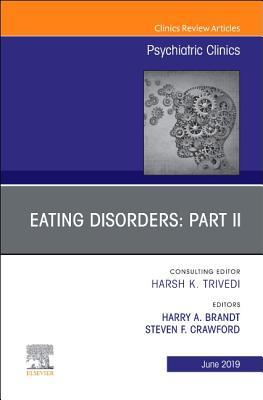 Why did we do this study?
Why did we do this study?
Eating disorders, such as Anorexia Nervosa and Bulimia Nervosa, involve significant disturbances in how people eat. For example, a person with an eating disorder may severely restrict how much they eat, or repeatedly eat large quantities of food and then try to compensate for this through behaviours such as vomiting or excessive exercise. Many treatments for eating disorders try to alter these unhelpful eating behaviours. The treatments do this, in part, by using what are known as behavioural methods. Some examples are teaching people with eating disorders practical skills such as food preparation and food shopping, making them face their fears related to eating and / or their body using exposure (e.g. eating feared foods, looking at one’s body in the mirror), and normalising their eating patterns and weight. All behavioural methods aim to reduce or eliminate problematic behaviours by teaching people new ways to eat and relate to their body.
Behavioural methods form a part of many evidence-based treatments for eating disorders such as cognitive behavioural therapy (CBT) and family-based treatment (FBT). We sought to determine whether behavioural methods are necessary for treatments of eating disorders to be effective.
How did we do this?
Dr. Bronwyn Raykos, Senior Clinical Psychologist at CCI, and Professor Glenn Waller from the University of Sheffield, reviewed research that has focused on behavioural methods across different treatment settings, eating disorder diagnoses and age groups.
What did we find?
We found that:
- Behavioural methods are definitely necessary to get the best outcomes for patients with eating disorders.
- In anorexia nervosa, the most important behavioural strategy is improving nutrition and weight. For other eating disorders, these interventions may work best in combination with other treatment methods, such as testing our feared predictions when making behavioural changes.
- Despite their importance in helping people with eating disorders recover, mental health clinicians are often reluctant to use behavioural methods. This is partly due to clinicians being anxious about using behavioral strategies.
How will we use it (or how can it be used)?
Behavioural interventions are necessary for eating disorder recovery. Doing things differently can be very anxiety-provoking for clients and even for clinicians, but is essential to get the best outcomes. At CCI, we continue to encourage our clients to try things that might feel scary at first (such as eating three meals and 2-3 snacks per day), including feared foods, or looking at their body in the mirror so they have the best chance of achieving a full recovery. In family-based treatment, parents are encouraged to help their young person make these changes. Clinician’s anxiety is also a focus of our supervision sessions.
Links
Efficacy of a brief group intervention for carers of individuals with eating disorders: A randomized control trial
Peter M. McEvoy, Katharina Targowski, Diana McGrath, Olivia Carter, Anthea Fursland, Marilyn Fitzgerald, & Bronwyn Raykos
International Journal of Eating Disorders
https://doi.org/10.1002/eat.23121

Why did we do this study?
Eating disorders can have a profound and pervasive impact on the perceived burden, quality of life, and overall psychological wellbeing of people who support an individual with an eating disorder. Clinical practice guidelines recommend that carers of people with an eating disorder be offered education and information on the nature, course, and treatment of eating disorders, and opportunities to participate in self-help and support groups. However, many carer interventions are time-consuming for the carer and expensive for health services. The aim of this study was to evaluate the impact of a brief, two-session carers’ intervention on carer burden, self-efficacy (carers’ confidence in their ability to help their loved one), skills, knowledge, negative family interactions, distress, and accommodating behaviours (the carer altering their lifestyle to make room for the eating disorders). We hoped that the brief intervention would help to reduce carer burden, negative family interactions, distress, and accommodating behaviours, and increase self-efficacy, skills, and knowledge about eating disorders.
How did we do this?
We ran a randomised controlled trial comparing carers who received the intervention immediately to carers who received the intervention after a waitlist period.
What did we find?
We found a large positive impact on carer burden, self-efficacy, skills, knowledge, and negative family interactions. In contrast, carer anxiety, depression, an accommodating behaviours did not change more in the intervention group than the waitlist control group. Carers might need additional support to help them manage their own emotional symptoms, and may need more time to adjust their lifestyle so that they are making fewer accommodations for their loved one’s eating disorder.
How will we use it (or how can it be used)?
The demonstrated effectiveness of this brief carers’ intervention across a range of important outcomes meant that it was imperative that it continued to be offered at CCI. We are also sharing our teaching materials with other health services who wish to deliver the intervention.
Links
The impact of methodological and measurement factors on transdiagnostic associations with intolerance of uncertainty: A meta-analysis
Peter M. McEvoy, Matthew P. Hyett, Sarah Shihata, Jordan E. Price, & Laura Strachan
Clinical Psychology Review
https://doi.org/10.1016/j.cpr.2019.101778
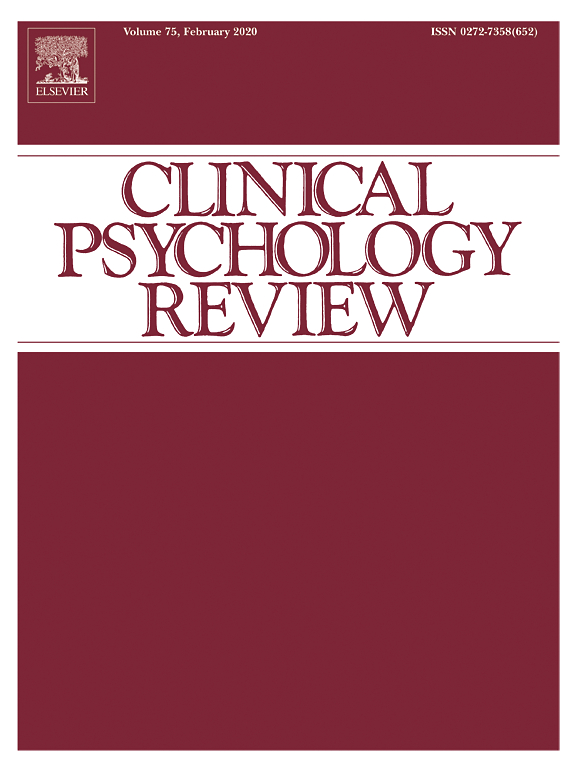 Why did we do this study?
Why did we do this study?
Intolerance of uncertainty is a trait reflecting the degree to which an individual hold negative beliefs about, and experiences aversive emotions in response to, unpredictable events. People who are high on intolerance of uncertainty, or IU for short, can experience intense emotions in anticipation of uncertain negative outcomes, regardless of their actual probability. The fear is to the unknown – not knowing whether a negative outcome will occur in a situation can be experienced as more distressing than knowing for sure that something bad will happen. IU has been found to be associated with a range of anxiety-related disorders, depression, and eating disorders. However, it was unknown how strong these associations were, whether IU was particularly important for some disorders compared to others, and whether a range of methodological factors could explain these differences. If IU contributes to emotional disorders, then it is important for us to understand these relationships so that we can effectively target them in treatment. The aim of this study was to quantify the strengths of association between IU and symptoms of anxiety disorders, obsessive compulsive disorder, depression, and eating disorders.
How did we do this?
We conducted a meta-analysis, which means we reviewed and combined the results from all studies in the literature that examined the relationship between IU and symptoms of anxiety disorders, obsessive compulsive disorder, depression, and eating disorders. In total, we combined 181 studies, which included 52,402 participants, and 335 independent effect sizes. This is the most definitive study of these relationships published to date.
What did we find?
Overall we found a moderate (.51) correlation between IU and the mental disorders included in our study, which suggests that higher levels of IU are indeed associated with more severe symptoms of emotional disorder. The strength of association was similar across the disorders, although it was more strongly associated with generalised anxiety disorder than for eating disorders, and it was stronger for depression than for obsessive compulsive disorder. Overall, the relationship between IU and symptoms was slightly stronger in non-clinical than clinical populations, for women than for men (but not for all disorders), and for some measures of IU than others.
How will we use it (or how can it be used)?
This study demonstrates that the relationships between IU and symptoms of anxiety disorders, obsessive compulsive disorder, depression, eating disorders are robust. Patients with these disorders are likely to find it difficult to cope with uncertainty in some important areas of their lives. Clinicians should assess IU in their clients, include it in their case formulations and treatment plans, and help their clients to develop confidence in their ability to manage uncertainty. Clinicians at CCI are well trained in assessing and treating IU.
Links
Self-efficacy in bipolar disorder: Development and validation of a self-report scale
Laura M. Smith, David M. Erceg-Hurn, Peter M. McEvoy, Louella Lim
Journal of Affective Disorders
https://doi.org/10.1016/j.jad.2019.10.026
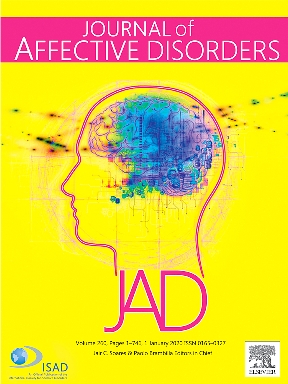 Why did we do this study?
Why did we do this study?
CCI has a psychological treatment programme for bipolar disorder. One of the aims of the programme is to help people to feel more confident about their ability to manage their bipolar illness, also known as self-efficacy. When people lack confidence in their ability to manage their own illness it can lead to poorer quality of life, coping and difficulties in sticking with treatment plans. We wanted to evaluate how effective our treatment is at improving our bipolar patients’ self-efficacy, but discovered there was no existing scale we could use to do this. Therefore, we decided to develop one.
How did we do this?
We developed a preliminary scale and then spent many years collecting completed measures from everyone who attended the CCI Bipolar Programme.
What did we find?
We were able to show that our scale is a brief, valid and reliable way of measuring self-efficacy in people who have bipolar disorder.
How will we use it (or how can it be used)?
We have already been using this scale to measure outcomes in our Bipolar Group programme and it has been used in other treatment settings as an outcome measure. We hope it will be used more broadly in psychological treatment programmes for people with bipolar disorder.
Links
Last Updated:
11/07/2024